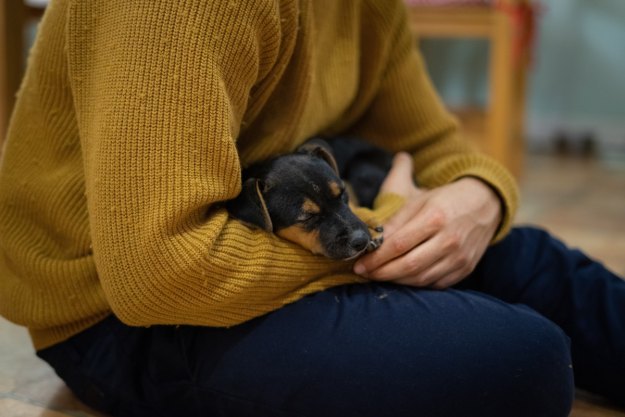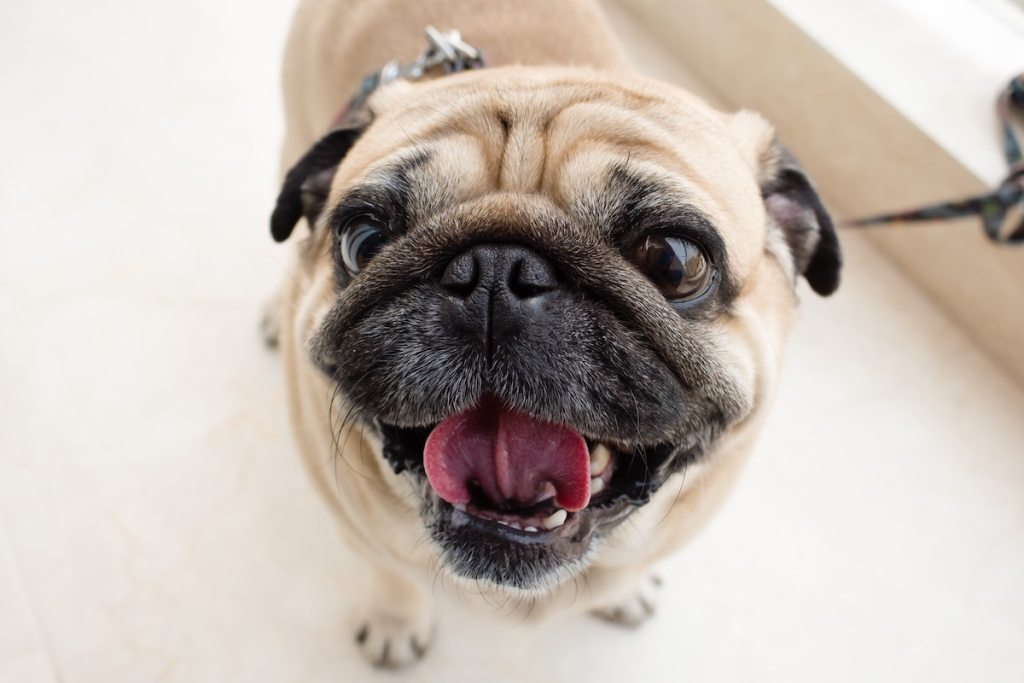
It’s hard to watch the beloved family dog get older. Often, advanced age is accompanied by new medical conditions, and it’s difficult for the untrained observer to determine what is a serious problem and what is simply a part of aging. You might notice an increase in dog breathing problems in old age, which can be especially tricky.
Is your senior pup just panting from the heat, or is something more sinister happening? Keep reading to learn more about the types of abnormal breathing to watch for, the causes of dogs’ breathing problems in old age, and some tips for easing your pup’s troubles.
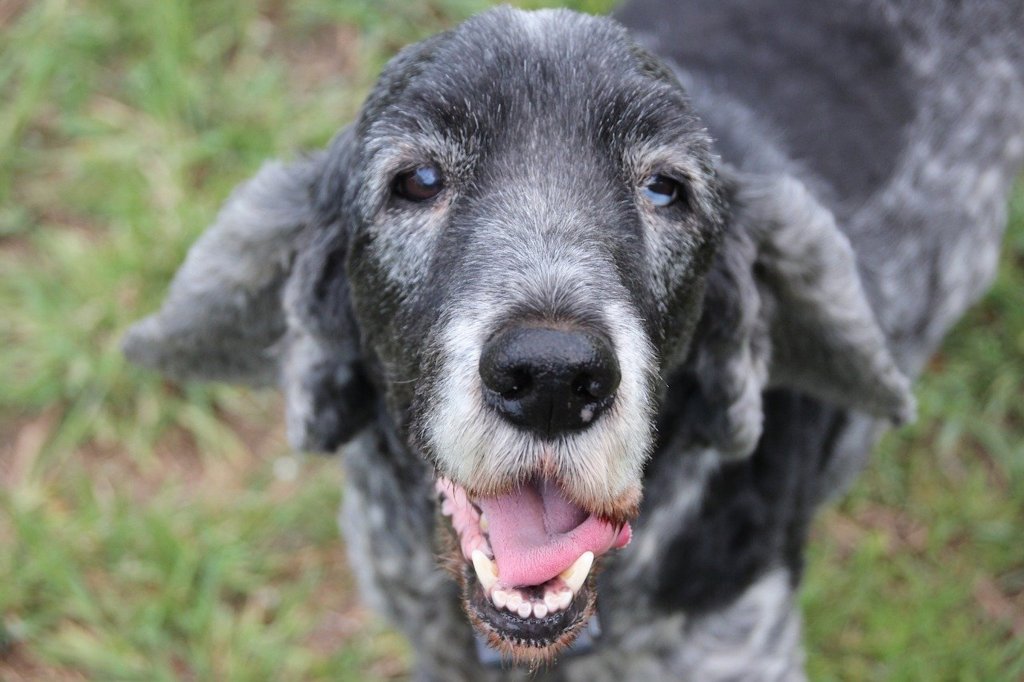
What types of breathing are abnormal for dogs?
There are a few different types of breathing problems that dogs may experience as they age. In general, healthy dogs of all ages take 15 to 35 breaths per minute while at rest. Puppies breathe faster than older dogs, and smaller dogs breathe faster than larger ones. Naturally, when your pup is exercising, their heart rate will increase. But ordinarily, they should breathe at a healthy pace, and their breathing should not seem labored. Any type of respiration outside this norm may be a cause for concern. Here are some potentially dangerous breathing patterns you should watch out for:
Wheezing: If a dog’s airways have a partial or complete blockage, they may begin making a loud, high-pitched wheezing sound when they breathe. Senior dogs who wheeze may also appear to gasp for air and have a faster respiratory rate.
Labored breath: Also known as dyspnea, labored breathing occurs when a dog has difficulty breathing in, out, or both. Signs of labored breathing include noisy respiration, flared nostrils, an open mouth when breathing, and the stomach or chest moving more than average while breathing.
Fast breathing: Not to be confused with panting, this type of breathing involves taking shallow, rapid breaths. Your dog may also have their mouth open less than they normally do while panting or the mouth may be closed completely.
Panting: A normal dog behavior, panting helps regulate a dog’s body temperature on hot days or after exercising. But, at times, panting may be a symptom of a deeper issue. You should get your pet checked out by a vet if their panting is accompanied by pain, fever, high blood pressure, obesity, labored breathing, or fast, shallow breaths.
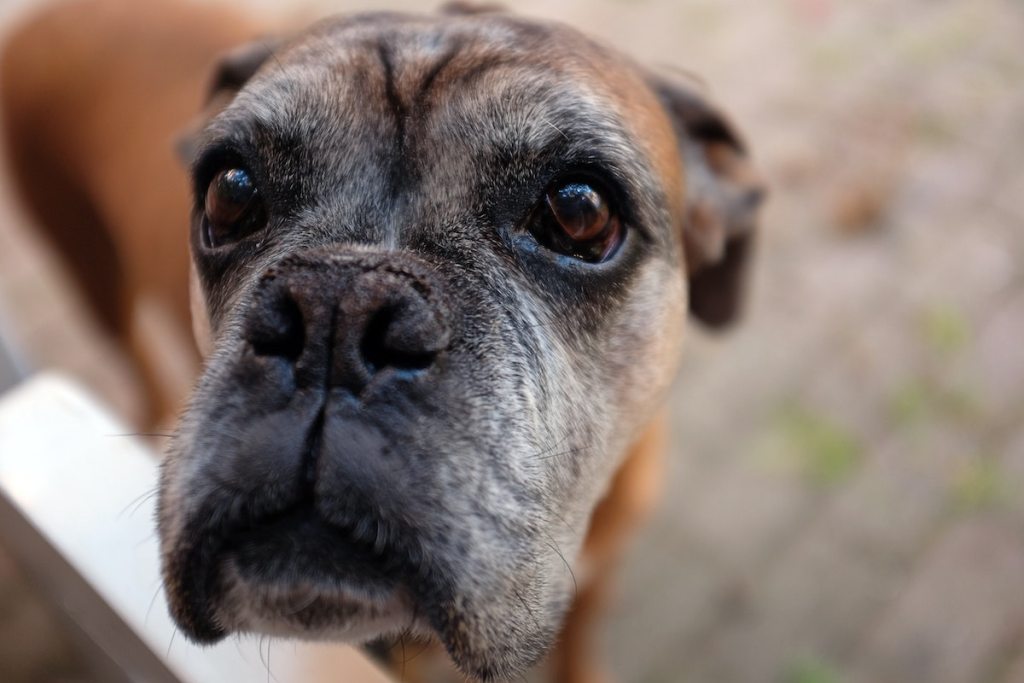
What are the signs of respiratory distress in dogs?
Dog breathing problems in old age may increase. However, you should be on the lookout for symptoms of respiratory distress in a dog regardless of how old your pup is.
These signs aren’t limited to breathing. Red flags that your dog is experiencing respiratory distress include the following:
- Rapid breathing or continuous panting
- Exaggerated, longer breaths
- Inability to settle due to distress
- Outward-facing elbows
- Extended neck
- Significant increase in the movement of the chest and abdomen while breathing
- Blue gums
- Increased lethargy
- Fainting or collapsing
There could be several reasons why your dog is in respiratory distress. Your best bet is to call the vet to get a proper diagnosis immediately if you notice any of these signs. If the vet isn’t available, search for the nearest emergency vet in your area.
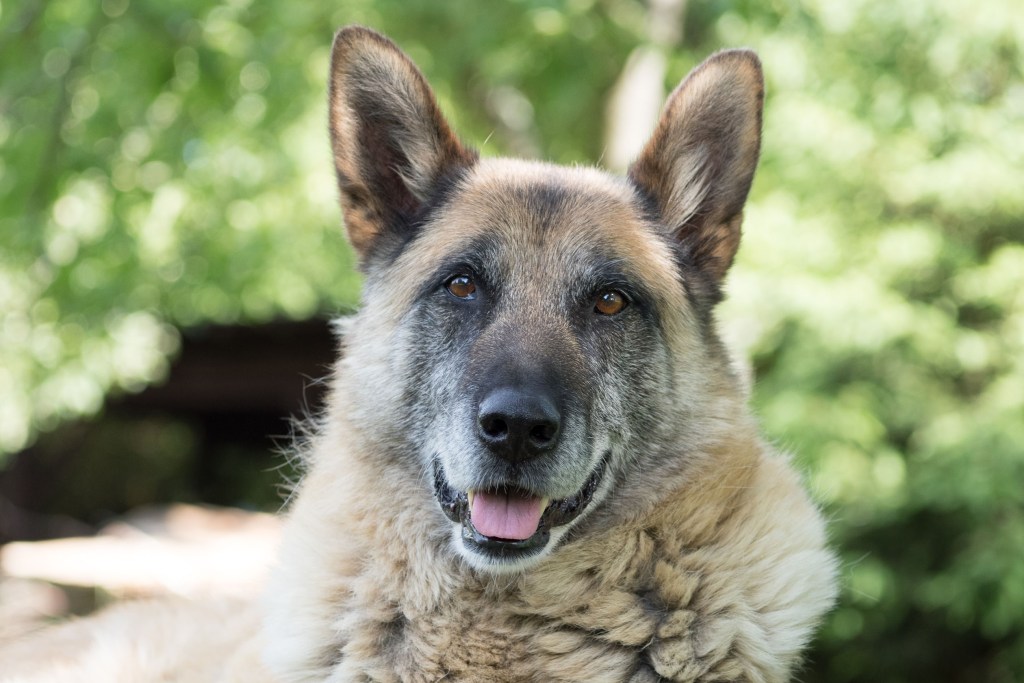
Why is my dog making weird breathing noises?
Various factors can cause different types of breathing problems. These are several of the most common causes of abnormal breathing in senior dogs:
Heat: Pups become more sensitive to heat as they age and may be more likely to have elevated heart rates and develop heatstroke. On hot days, avoid walking your dog when the sun is at its peak, and ensure that they have plenty of cool water to drink.
Respiratory diseases: Medical conditions that impact the respiratory system can create breathing issues. Some of these conditions include cold and flu, pneumonia, kennel cough, canine distemper virus, COPD, and lung tumors.
Injury or trauma: A dog may also breathe shallowly because of physical injuries, trauma, and their associated pain.
Breed: Some dog breeds are more prone to respiratory issues than others. These include pugs, boxers, bulldogs, and other short-nosed breeds.
Blockage by a foreign object: Small bits of food, toys, or other items can occasionally lodge in the nose, mouth, or windpipe. Any sort of obstruction may cause breathing problems.
Medication side effect: Excessive panting may be a side effect of your dog’s medication. Prednisone, a prescription used to treat arthritis, skin irritation, and cancer, can cause abnormal breathing patterns. Consult your vet if this is the case.
Other medical issues: Labored breathing can be a symptom of a number of medical conditions, like allergies, thyroid problems, obesity, metabolic acidosis, congestive heart disease, and cardiovascular disorders.
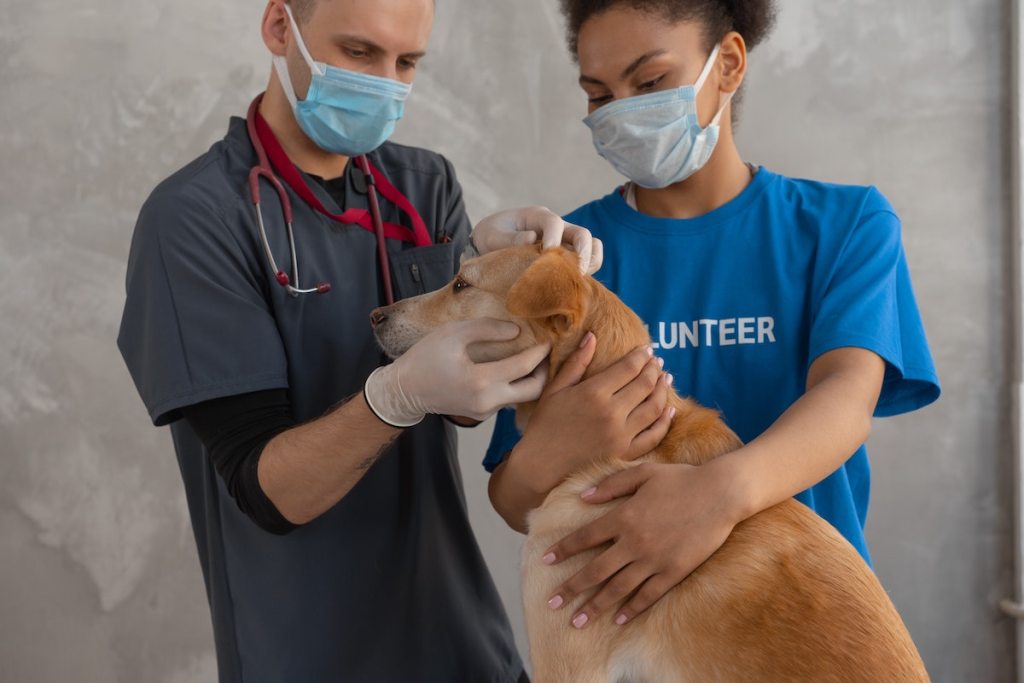
How do I help my dog that’s struggling to breathe?
If your dog begins breathing abnormally, it’s only natural to worry. Sometimes, irregular breathing patterns clear up on their own, such as if your dog is panting from the heat or after vigorous playtime. But other forms of breathing abnormalities, like wheezing, labored breath, and fast breathing, can be signs of more serious issues. In these situations, a trip to the veterinarian is in order.
If you notice a change in your pup’s breathing, take them to a cool, dry area where they can relax comfortably. This can help to return their breathing to normal if the issue is caused by heat or overexertion. You can also give them cold water to drink. If your senior dog’s breathing doesn’t return to normal, take them to the veterinarian for an exam. The vet will ask you about your pup’s other symptoms and run tests to diagnose the problem. Depending on the cause of the labored breathing, treatment can range from medication to surgery.
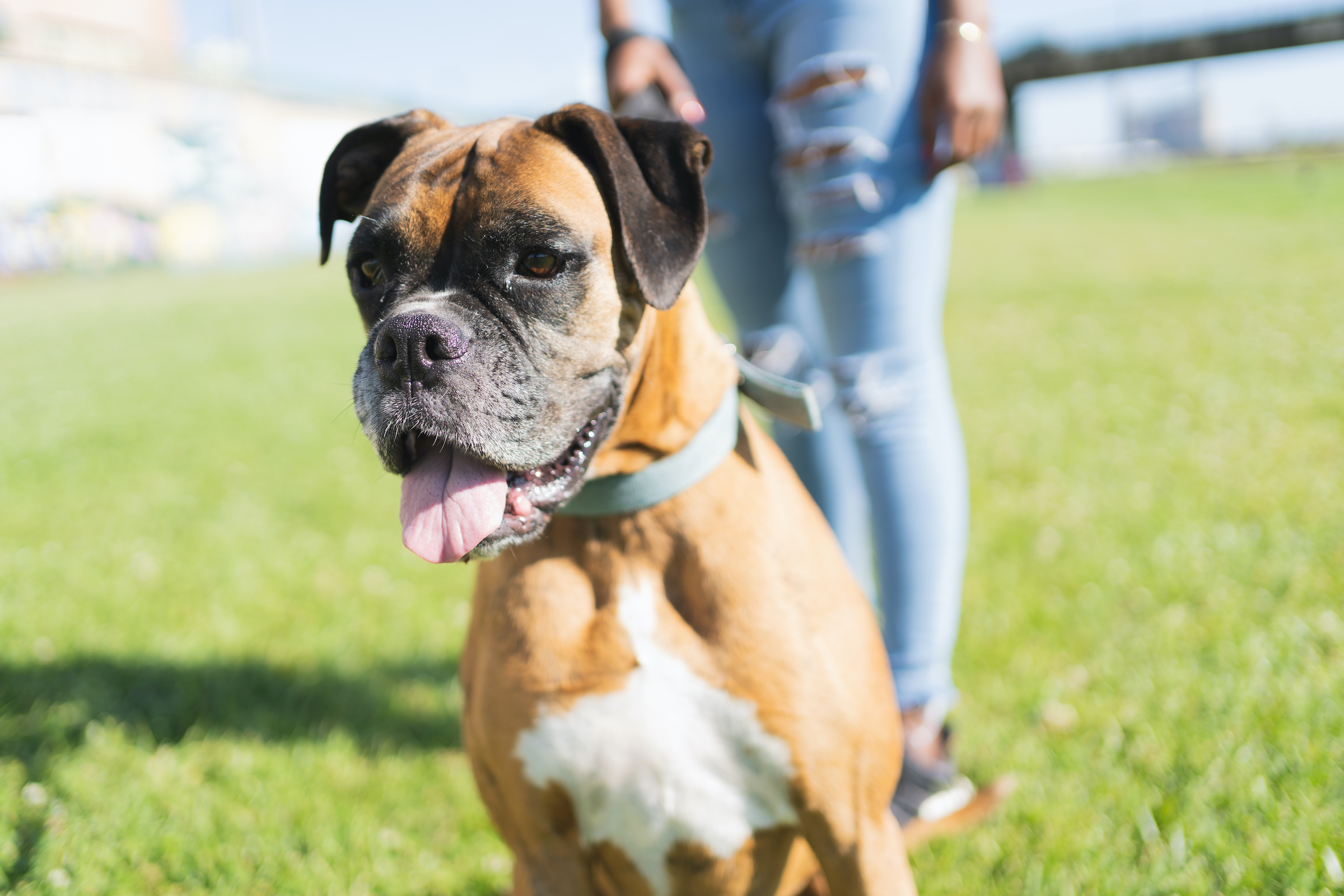
Always consult your vet
Is your old dog breathing heavily? While it may not be anything serious, your best bet is to approach any uncharacteristic behavior with caution. At the first sign of breathing troubles, schedule an appointment with your vet. No matter what’s causing the problem, a veterinarian can provide a diagnosis and a treatment plan to ease your senior pup’s discomfort and bring them (and yourself) some peace.
Editors' Recommendations
- 5 surefire ways to keep your dog off your bed and get a good night’s sleep
- Taking your dog’s collar off at night: Safe move or safety risk?
- How to tell if your older dog’s health decline means the end is near
- My dog is shaking and acting weird – should I worry?
- Xylitol is dangerous for dogs: 10 surprising products that contain it as a hidden ingredient



